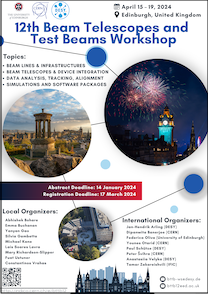Conveners
Lectures: 1
- Peter Svihra (CERN)
Lectures: 2
- Younes Otarid (CERN)
Lectures: 3
- Tamar Zakareishvili (Univ. of Valencia and CSIC (ES))
Lectures: 4
- Younes Otarid (CERN)
Neutrinos are the only particles that easily elude the Standard Model description. Due to their non-zero mass, effects like neutrino oscillations have been observed, which are clear indicators of Beyond Standard Model physics. With so many unknowns, accelerator neutrino beams offer a clean testbed for experiments that would like to further understand the underlying physics. We will shortly...
This lecture is an introduction to the Trigger and DAQ (TDAQ) systems for small and medium HEP experiments. After introducing the main role of TDAQ and its requirements, it goes through the basic TDAQ concepts, like digitisation, latency, deadtime, busy logic and derandomization. Each component of the TDAQ framework is described with the corresponding technology choices, following the scaling...
Cancer is a leading cause of death worldwide, with about 10 million fatalities every year. A large fraction of cancer patients receives radiotherapy in the course of their treatment, of which the vast majority is treated with X-rays. Ion-beam radiotherapy offers steeper dose gradients and a higher biological effectiveness (ability to neutralise cancerous cells) compared with conventional X-ray...
A multi-TeV muon collider represents an extraordinary opportunity for groundbreaking discoveries and precise Standard Model measurements. By colliding muons, the entire center-of-mass energy becomes available for high-energy reactions, allowing for the exploration of extremely short length scales. Additionally, multi-TeV muons have a high probability of emitting electroweak radiation,...
